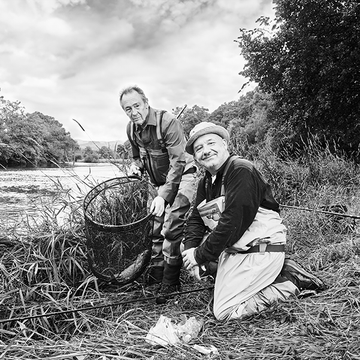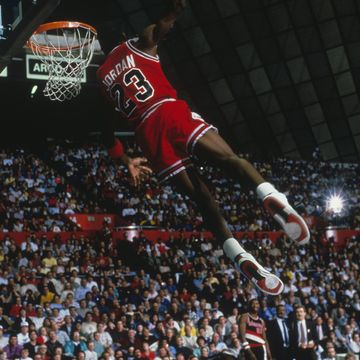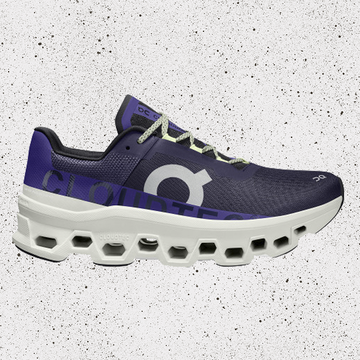The London Marathon has crept up on us and will take place this weekend, which means tens of thousands of people will be limbering up to run the 26.2 miles around the capital city .
What with all the training they'll (hopefully) have done, it's fair to say their fitness will be in pretty good shape by now. But as Dr Seth Rankin, the founder London Doctors Clinic points out, "your body is not designed to run marathons". So while, sure, running is good for you, he also warns that there are some ways in which marathon running can actually be of detriment to your health.
These are the different areas of your body that could be susceptible to damage, as well as how you can minimise the chances of it:
1. Kidneys
These guys need hydrating, and marathon runners more than anyone must remember that. "If there's one thing you do to stay healthy while running your marathon, it's to stay hydrated. As a rule of thumb, everything that goes out by means of sweat and pee must be replaced, and then add more, for luck," says Dr Rankin.
If you don't, he explains, you could become severely dehydrated, which can damage the kidneys, resulting in a condition called 'acute kidney injury'. "In fact, one recent study found that 80% of marathon finishers showed signs of kidney injury by the end of the race," warns the doctor, adding: "Although this type of kidney damage is usually completely reversible on re-hydration, extreme cases could have long-lasting implications on kidney health".
How to prevent it: "Don't wait until you feel thirsty, as chances are you're already slightly dehydrated by this point. Make the most of those water-station opportunities, refilling as often as reasonably possible."
2. Muscles
"By race-day, your muscles should be in optimum condition already," says Dr Rankin, pointing out that "there's no point in last minute squats the morning of the race, as it won't make a difference increasing muscle mass". He goes on to warn about a rare condition marathon runners might want to watch out for, which is called exertional rhabdomyolysis (or rhabdo, in abbreviated athlete jargon).
"This condition is caused by combination of factors commonly experienced by marathon runners, including overexertion, high temperatures and dehydration. This results in the breakdown of muscle tissue, which releases an outpouring of proteins into the bloodstream which can damage the kidneys." Symptoms include weakness, decreased urine output, fatigue and soreness (all quite standard post-marathon symptoms) along with the appearance of dark, tea-coloured urine. "If you feel particularly unwell with the above symptoms during or after the race, seek medical advice immediately," advises Dr Rankin.
How to prevent it: Warm up, and do it properly. "Take the time to thoroughly warm up and stretch muscles, to avoid muscle injuries."
3. Ligaments and tendons
"Every time you lace up those trainers, you face a small risk of sprains and ligament tears," says the medical expert, noting that there's always a handful of people who acquire these kind of injuries during the race.
How to prevent it: Again, by thoroughly warming up and stretching beforehand. Also, "try to avoid jerky movements, such as explosive changes of direction, which can cause damage to the anterior cruciate ligament (ACL) of the knee, and be extra cautious running on uneven ground such as cobblestones and potholes."
4. Joints
While Dr Rankin explains there's conflicting evidence as to whether running damages the joints such as knees in the long-term, he does note that "repeated trauma to the joints such as regular running on hard surfaces has the potential to cause damage over many years". And you've got a higher risk of this if you've ever suffered an injury to the joint – such as broken knee or hip.
How to prevent it: "Make sure to wear supportive shoes, with plenty of cushioning on the sole to help absorb the shock transmitted through your leg on each step. Running on softer surfaces – such as grass – is far better than running on concrete, as again the grass absorbs some of the shock, diverting it from your joints."
5. Heart
"Sadly, there's often at least one person (albeit out of thousands of participants) who suffers a serious cardiac event like a heart attack while running a marathon," says Dr Rankin. So he warns that "even if you seem as fit as a fiddle, there's still a tiny chance of having an undiagnosed heart defect.
"It's thought that one in 300 young people (aged 12-35 years old) in the UK is living with a heart defect, which could lead to sudden death. It's for this reason the organisers of some European marathons insist on all participants undergoing an ECG as part of their mandatory pre-race medical exam, to try to catch these few people who may be at risk of having a heart attack mid-race."
How to prevent it: It would obviously be very hard to predict or prevent a heart attack, and while Dr Rankin doesn't want to scare-monger, he does want to remind us it's important you don't disregard any potential cardiac symptoms, including: "light-headedness, excess breathlessness, palpitations and chest pain or heaviness that may radiate to the neck, jaw, or left arm. If you do experience any of these while running, notify race organisers immediately, and get checked out. There are always plenty of medical staff on hand who would jump at the chance to provide a quick, reassuring check-up."
6. Chafing
This one's a more obvious one (hello, Vaseline, old friend). And it can be particularly troubling when it occurs mid-race, says the doctor, because of the significant impact it has on your concentration. "When you're twenty miles into a marathon, your only focus should be the finish line, not the burning between your thighs around your sports bra," he says.
If you do suffer from chafing while running, Dr Rankin says you should "make sure to shower as soon as possible after the race, and apply antibiotic creams such as Sudocrem to keep the affected area clean and infection-free".
How to prevent it: "Seamless clothes made off synthetic material are perfect for a friction-less fit, and are also great for the evaporation of sweat to keep you cool. You can also buy various anti-chafing products that can act as an extra barrier of protection, between the offending clothing and your skin."
7. Jogger's nipple
While on the topic of chafing, an unpleasant yet common condition suffered by runners is called 'jogger's nipple', or 'fissure of the nipple'. "This painful condition is caused by friction between the nipples and clothing, especially during running or other physical activities, and in severe cases can cause nipples to bleed from the irritation and dryness," says the doctor.
How to prevent it: "Different runners recommend various methods to protect the nipples from developing this painful condition, from Vaseline to bandages. Remember, what works well for one person might not for another. Try a few in your pre-marathon training, to identify which works best for you, and bring plenty of emergency nipple-protection with you on race-day, just in case."
8. Immune system
"Various research studies have found that long distance running (such as marathon events) result in a period of immune system dysfunction for up to 3 days following the race," says Dr Rankin, adding that "this is likely due to a combination of stress hormones, dehydration, increased blood flow and raised body temperature."
It's in this period of weakness that "opportunistic pathogens", as the doctor calls then, may strike, resulting in a post-race cold or sickness.
How to prevent it: "Make sure to keep your immune system in optimum condition during your build-up to race-day, by getting plenty of sleep and sunshine, eating a healthy diet high in fruit, vegetables and whole grains, and avoid toxins such in alcohol and cigarettes. And if you fall sick on race day or just before, consider whether it's really worth participating."
9. Feet
Your feet take a beating, quite literally, while running a marathon. "Each step onto hard ground leads to slight swelling of the feet – which is why runners are encouraged to buy shoes half a size larger to accommodate for such inflammation," explains the medical expert, who warns it's also important to be aware of conditions such as athlete's foot, which can develop as a result of fungal build-up in moist running shoes.
How to prevent it: "Make sure you wear a tried and tested pair of trainers for your marathon – new box-fresh ones will most likely rub your feet raw. And keep both your feet and shoes as dry and clean as possible to avoid build-up of bugs in your trainers."
10. Mind
"Generally, running has a significant positive impact on mental health, boosting mood, improving confidence and self-esteem," says Dr Rankin, noting that regular exercise is strongly advised as a key tool in the management of depression. But marathon running can be mentally exhausting as well as physically tiring.
How to prevent it: It's pretty hard to avoid the end-of-race explosion of emotion, and why should you? So just embrace it. "If you're lucky, the outpouring of 'happy hormones' released as you cross that finish line will keep you on a post-race high for days."














